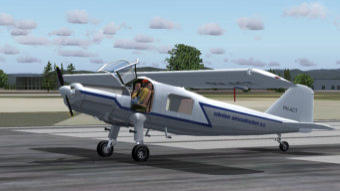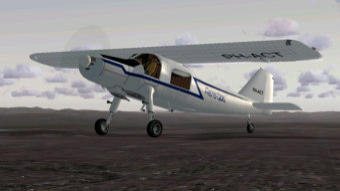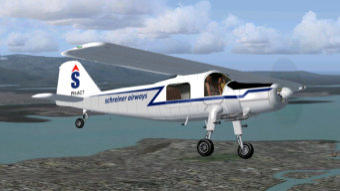Type
: Dornier Do 28D Skyservant
Program
: FS2004 and FSX,pack with 2 repaints
Model
: Anthony Konstantinidis
Operator
: Flashband Flight, Seaport Commuter
Download
: Complete aircraft
Flashband Flight was part of Nationaal Vliegtuig Beheer, The Hague.Its activities were pleasure flights and adhoc charters from Rotterdam Airport. During that period they flew
with a Cessna P206 Super Skylane, three Dornier Do28D's and a Britten Norman BN-2A. The Islander PH-NVA was purchased for the Amsterdam-Middenzeeland-Lille
service, which quickly turned out to be a flop in terms of control. In addition, an attempt has been made to run a weekly service between Rotterdam and the Dutch islands
Ameland and Texel during a summer season. At the weekends it flew pleasure flights over Rotterdam. The PH-KLF was part of the fleet of Flashband Flight from 02.10.1969
to 14.11.1972 and the PH-NVC only 4 months in 1971. The PH-KLF was sold to Portugal and the PH-NVC returned to lessor Dornier in Germany. Flashband and Seaport did
not succeed to built a profitable position on the market and stopped its activities.
Dornier
Type
: Dornier 228-212
Program
: FS2004 and FSX
Model
: Premier Aircraft Design
Operator
: Flexair
Download
: Complete aircraft
The PH-FXA was leased by Flexair for the service Rotterdam Airport-London City Airport. Flexair exploited
this service from September 1989 till July 1994. The company had too less financial resources to expand its
operations. It intended to start a service between Amsterdam Schiphol Airport-London City Airport with an
aircraft with more passenger capacity. The financiers did not provide the necessairy recourses and Flexair
went bankrupt.






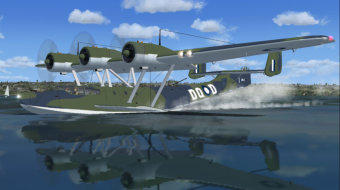
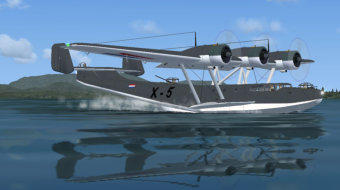
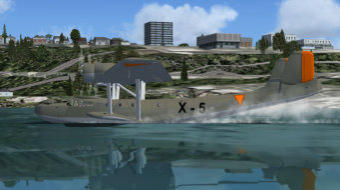
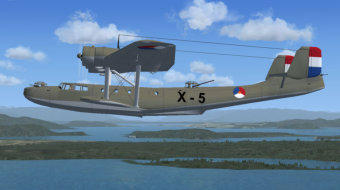
Type
: Dornier Do-24K1
Program
: FS2004 and FSX, pack with 4 repaints
Model
: Wim Vergeer
Operator
: MLD
Download
: Complete Aircraft
In 1926 the Dutch Navy ordered a number of Dornier Wal flying boats to patrol the vastness of the Dutch Indies. The Wal's performed good, but soon got outdated.In 1934 the
Dutch Navy started an investigation into a succeeder for the Wal. Around that time Dornier-Metallbauten G.m.b.H. in Friedrichshafen made the first prototype for the Do-18, a
modernized version of the Wal. The Do-18 did not meet up to the required standards of the Dutch Navy. C. Sanders, then officer 2nd class of the Navy, made up the requirements
for the successor of the Wal. The new plane had to be bigger, equipped with three engines, no pusher propellers, a maximum speed of 315 km/h, be of an all-metal construction
and comforatble enough for long distances. With these specifications in hand the Dutch Navy went to a number of company's for their answer to the requirements. Fokker came up
with the B-V, which was turned down, just like the design of the American Sikorsky company. Dornier was the only one of the three that could be ready in time to meet the
requirements of the Dutch Navy. Before the year was over a detailed model was ready to be shown to the Dutch. On August 6th 1936 the first contract was signed for the delivery
of 6 flying boats to the Dutch Navy, getting the designation Do-24. The German rebuild after WW1 was in full swing and the RLM (Reichsluftfahrministerium) was not willing to
make any production capacity available for the Dutch Do-24's. The first order was therefore placed via the Swiss Aero-Metall A.G. in Zurich. Aero-Metall was the Swiss Dornier
factory and she handed the order over to a Dornier daughter company, A.G. fur Dornier Flugzeuge based at Altenrhein, on the Swiss side of the Bodensee.
The Dutch Government decided to replace the three Junkers Jumo 205C diesel engines generating 600 hp the Wright Cyclone GR-1820-F52 radial engines. The choice for these
engines was made because the Fokker T.IV and the large order for the Glenn Martin 139 bomber were equipped with this engine. The engine was 15% lighter and gave 50% more
power than the Junkers diesels. The first flight of any Do-24 took place on July 3rd 1937. One day later the aircraft was handed over to the MLD (Marine Luchtvaart Dienst, Dutch
Naval Service) and September 5th the aircraft, now with the registration D-ADLP, was flown to the Weser Flugzeugwerke at Einswarden for the sea trials which were to be held on
the North Sea. The seaworthiness of the Do-24 V3 amazed the spectators, there were times when the cockpit of the aircraft was completely submerged. The trials lasted till the
end of October and were concluded to full satisfaction. The first Do-24K-1 got the registration X-1 and shipped from Hamburg to Morokrembangan in the Dutch East Indies. Early
1938 the aircraft was ready for it's first mission. The Dutch government decided finally to order a total of 96 Do-24K planes, but due to the Japanese Invasion only 37 were
delivered, partly manufactored under licence by Aviolanda. Only 5 Dorniers servived the Japanese invasion and flown to Australia. They entered service in the RAAF but withdrawn
in 1944 due to a lack of spareparts. The X-5 entered service on 18-03-1938 and transferred to the RAAF om 29-04-1942 and registered as A49-1. Withdrawn on 20-12-1944.
1938
1939
1942
1942 RAAF





Type
: Dornier Wal F
Program
: FS2004 and FSX, pakket with 2 repaints
Model
: Wolfram Beckert
Operator
: MLD
Download
: Complete airplane
After WW1 Germany was not allowed to build aircraft because of the Treaty of Versailles. Dornier designed its aircraft in Germany but the production was diverted to Italy.
The Dornier Wal, one of the most famous German flying boats of its time, made the first flight on November 6 1922.The plane, designed by Claude Dornier, was a development of
the Dornier GS.1 of 1921. The monoplane was constructed of duraluminum and equipped with the by Claude Dornier developed "Stummels", a kind of stabilization on both sides of
the fuselage. One of the first orders came from Spain for six aircraft. CASA in Madrid also received the production license. Shortly after the Japanese Kawasaki also received a
license for the construction of the Dornier Wal, later followed by Aviolanda Papendrecht in the Netherlands and by the American Dornier plant in the US. Until 1931 the Wal was
built in military and civil variants built by CMASA Pisa, Italy.A total of 300 Wal's have been built.
In 1926 the Dutch navy ordered ordered 46 Dornier Wal flying boats for patrol flights in Dutch East Indies. The first six were built by CMASA and assembled by Aviolanda with parts
built by CMASA. The remaining 36 were built under license by Aviolanda. 40 Were of type Wal G with two Lorraine-Dietrich engines of 450 hp each and the last 6 of type F with two
Lorraine-Courlis of 600 hp each and with slightly langer wings whereby the takeoff weight of 5,700 kg went to 7,000 kg. From 1939 the Wal's were phased out and replaced by the
specially for the Netherlands designed Dornier D0-24K. The D-16 joined the MLD on 20-08-1928 and was written off in March 1940 at the Naval Air Base Morokrembangan in the
Dutch East Indies.


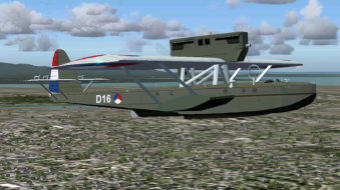
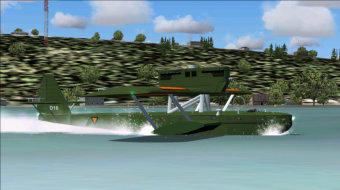
1928
1939

Type
: Dornier 228-212
Program
: FS2004 and FSX
Model
: Premier Aircraft Design
Operator
: Schreiner Airways Cargo
Download
: Complete aircraft
In 1986, the Schreiner Group decided to start a new subsidiary which focused on the freight market.
They started with a single Dornier 228, soon added by two second-hand Fokker F27-400s.
Beside the Dornier and the F27s, Schreiner Airways Cargo also had three Airbus A-300B4's, a Lockheed L-382G
and a De Havilland DHC-8 in its fleet
The PH-SDO flew with Schreiner from 1985 untill 1987 and than sold to the UK.


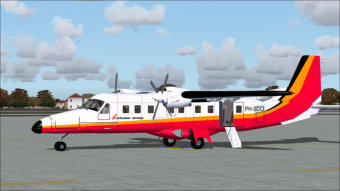
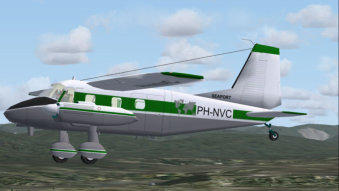
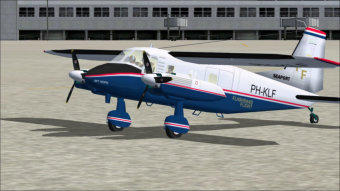

Type
: Dornier Do 27A-4
Program
: FS2004 and FSX, pack with 3 repaints
Model
: Hannes von der Heide
Operator
: Schreiner Aerocontractors
Download
: Complete aircraft
From 1959 till 1966 the PH-ACT was owned by Schreiner Aerocontractors and flew in three diferent liveries of the Schreiner Group. Till 1962 it had the Aero-Taxi, from 1962
till 1966 the Aerocontractors and in 1963 only a few months in 1963 in the Schreiner Airways livery. The aircraft was mainly used for charter and taxi services. In 1967 it was
sold to Germany.
